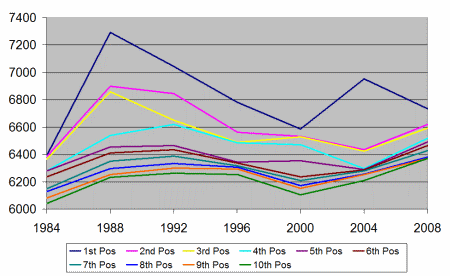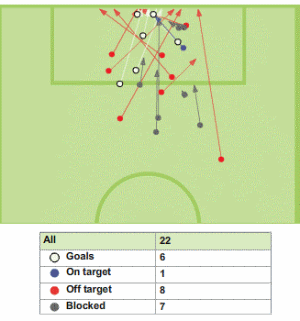Or search by topic
Number and algebra
Geometry and measure
Probability and statistics
Working mathematically
Advanced mathematics
For younger learners
Charting More Success



If you are a teacher, click here for a version of the problem suitable for classroom use, together with supporting materials. Otherwise, read on...
This problem explores the same ideas as Charting Success.
Below are some graphs, charts and diagrams created by sports statisticians, trainers or competitors to help them to analyse performance, inform training programmes or improve motivation.
For each diagram, consider the following questions:
- What information can you deduce from each diagram?
- Are the diagrams effective in communicating the information?
- If you were a sports coach (for the team in question, or perhaps their future opponents), how might you use the information in each diagram?
- Do the diagrams raise any interesting questions for you? Is there a story to be told?
Baskets made (o) and missed (x) in the fourth quarter of a basketball match

Finishing Scores of top ten athletes in Olympic heptathlon

Shots on and off target for one team in a football match

You may also like
Football Crazy Hockey Mad
In a league of 5 football teams which play in a round robin tournament show that it is possible for all five teams to be league leaders.
Coordinates and Descartes
Have you ever wondered how maps are made? Or perhaps who first thought of the idea of designing maps? We're here to answer these questions for you.
Florence Nightingale - the Compassionate Mathematician
Florence Nightingale may be well known for her role as a nurse, but she was also an excellent mathematician, collecting and analysing data to help improve hospital conditions.

